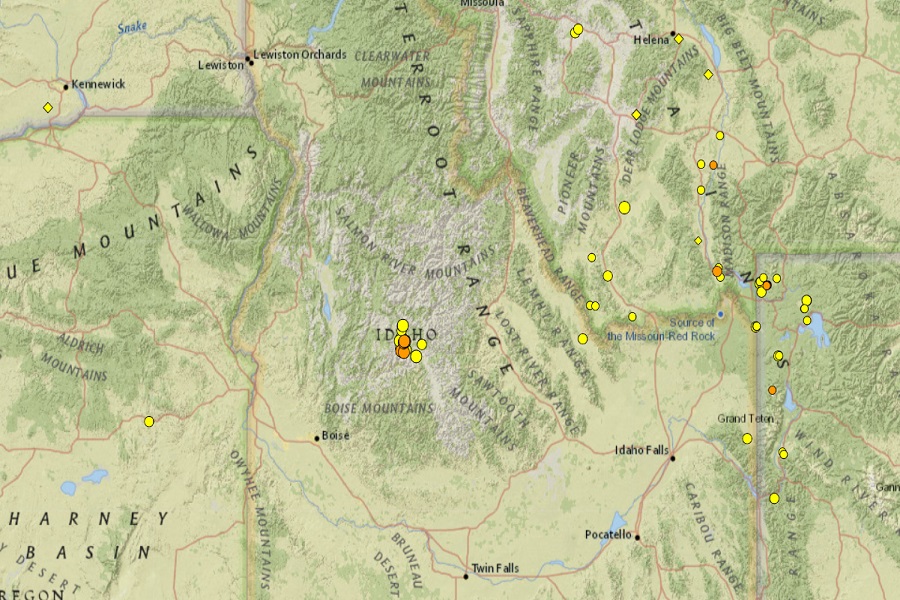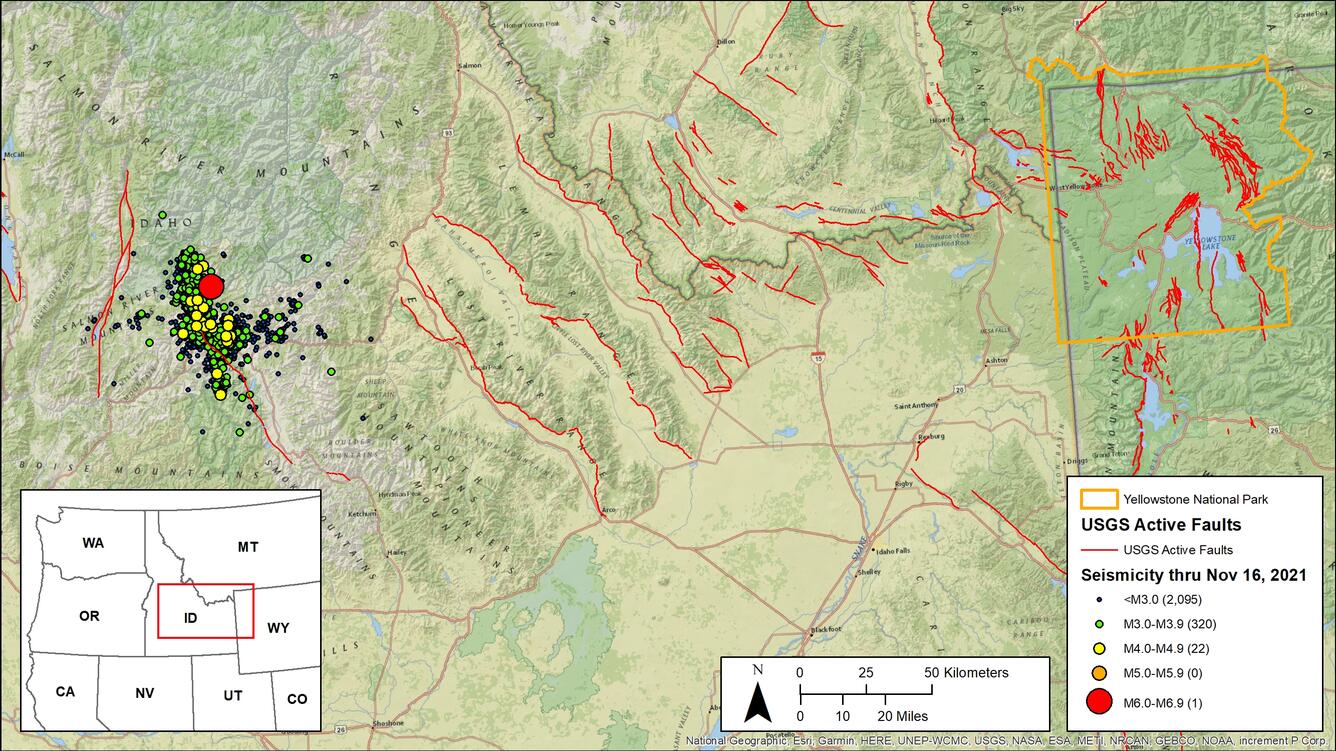
Central Idaho is shaking, with more than 20 earthquakes recorded in the last week; 2 struck in just the last 24 hours. But the Yellowstone Volcano Observatory (YVO) and USGS says its nothing to worry about: these are simply aftershocks from the large magnitude 6.5 event that struck near Stanley, Idaho on March 31, 2020. USGS also stresses that the earthquakes in Idaho today are not directly related to the Yellowstone Supervolcano.
The strong March 2020 earthquake was the second largest earthquake recorded in Idaho. Fortunately, it caused very little damage, but its shaking was felt across the region. According to USGS, since that initial large earthquake, known as a mainshock, there have been over 5,000 aftershocks in the same area.

USGS says that aftershocks are a normal and forecastable phenomenon following tectonic earthquakes caused when the Earth’s crust moves past itself along fractures called faults. “This movement usually happens very quickly as stored tectonic force is released,” USGS explains. “The energy produced by the fault movement is converted into seismic waves that radiate outward from the rupture. Faults only rupture a length of a few 10s to 100s of kilometers at a time,” they add.
The Stanley earthquake rupture was about 20 km or 12 miles long. The fault system is part of the Basin and Range province of the western USA, which is extending due to tectonic activity and doesn’t have any direct relation to the magmatic system beneath Yellowstone.
Scientists aren’t sure when the area around central Idaho will stop shaking. USGS says that aftershocks can last for tens or even hundreds of years, depending on the size of the mainshock. As an example, in eastern Idaho, USGS continues to record aftershocks from a magnitude 6.9 earthquake there in 1983, even though nearly 40 years have passed.